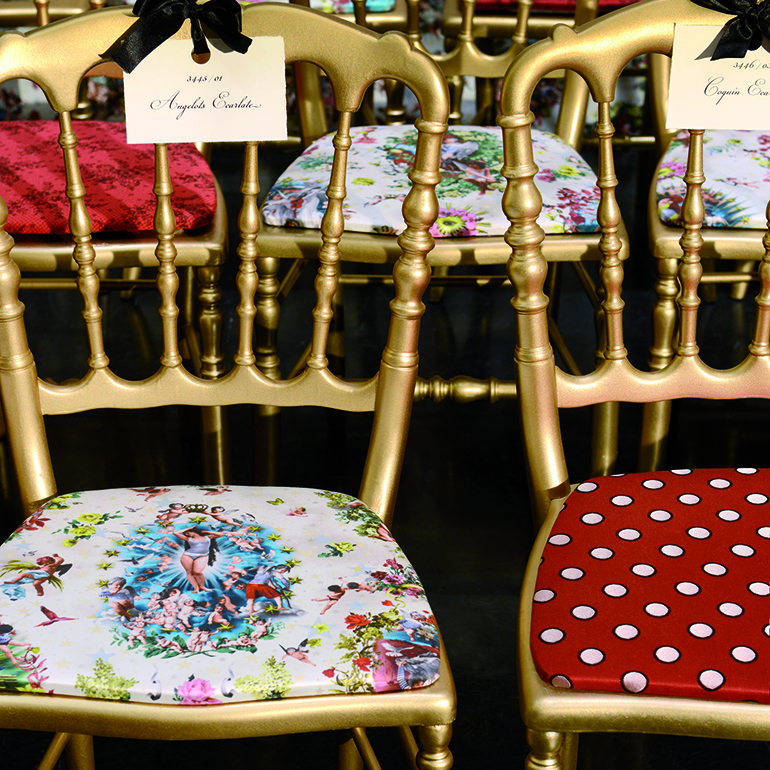Jean Paul Gaultier launches fabric collection


Jean Paul Gaultier has unveiled a spectacular collection of interior fabrics that is imbued with his customary flair and sense of drama. Designed for French fabric company Lelievre and aptly named Le Défilé - French for The Catwalk Show - Gaultier's second ever home collection draws much from his fashion designs, combining his signature spots with images of crushed metal, soft, evocative landscapes, romantic motifs of angels or cupids, and a lace and net take on classic Damask. Bold colours, metallic reflections and unexpected textures introduce an element of creative surprise (and a touch of humour) to the home.
One of the most amusing designs is undoubtedly Mousaillon. Gaultier injects some humour in this romantic fabric, inspired by the innovative images by French photographers Pierre et Gilles. Decoupage style medallions feature cherubic Cupids and musicians wearing Gaultier's signature sailor stripes in red and blue against a black or indigo colourway.
Delightful groupings of cherubs, lovers and musicians - all sporting sailor striped vests or tops - also grace Angelots. Available in five colourways, from a sophisticated black to a colourful scarlet, this is Toile de Jouy as you have never seen it before.
Along with sailor stripes, spots have long been one of Gaultier's favourite motifs, and he transposes them into interiors beautifully in the Spatial design. This stunning imitation suede fabric, which comes in six colourways, including a claret and petrol blue combination, features giant spots exploding in a splash of colour.

Gaultier's second take on his beloved spots, Coquin is more sedate than Spatial. Black rimmed spots dot the cotton and viscose fabric and an iridescent weft adds visual interest. It works beautifully as a counterpoint to another of Le Defile's fabrics, Casino. Delicate, feminine and quintessentially Gaultier, this damask fabric combines the designer's trademark lace on a striking fishnet background.
But perhaps the most eye-catching designs in Le Défilé are the most masculine ones, with their bold colours and strong designs. The unusual Fangio - named after Juan Manuel Fangio, who was perhaps the greatest Formula One driver of all times - features digital prints of crushed metal and car parts on a soft imitation suede. It comes in three colourways, including a splendid combination of petrol blue and orange. The theme of dented car bodywork recurs in Le Male, where it is interpreted in a monochrome key - black or indigo - with dazzling reflections that simulate chrome metal.
Digital prints of a very different nature appear on the last design of the Le Defile collection, Vagabond. This supremely elegant linen depicts softly focused, restful landscape in black, indigo or sepia.
Sign up to our free daily email for the latest royal and entertainment news, interesting opinion, expert advice on styling and beauty trends, and no-nonsense guides to the health and wellness questions you want answered.
Fabrics start at £78 per metre through Lelievre.
Carla Passino is a multimedia journalist with more than seventeen years’ experience in national and international media.
Carla's primary areas of interest are political, economic and housing trends in global cities. Much of my time is spent writing about the world’s prime property markets and the factors that affect it, covering fiscal, legal, political and financial issues linked to home ownership, and reporting on major shifts in British, European and international housing. Over the years, Carla has written about culture, education, interiors, farming, travel, food, wine and more.
